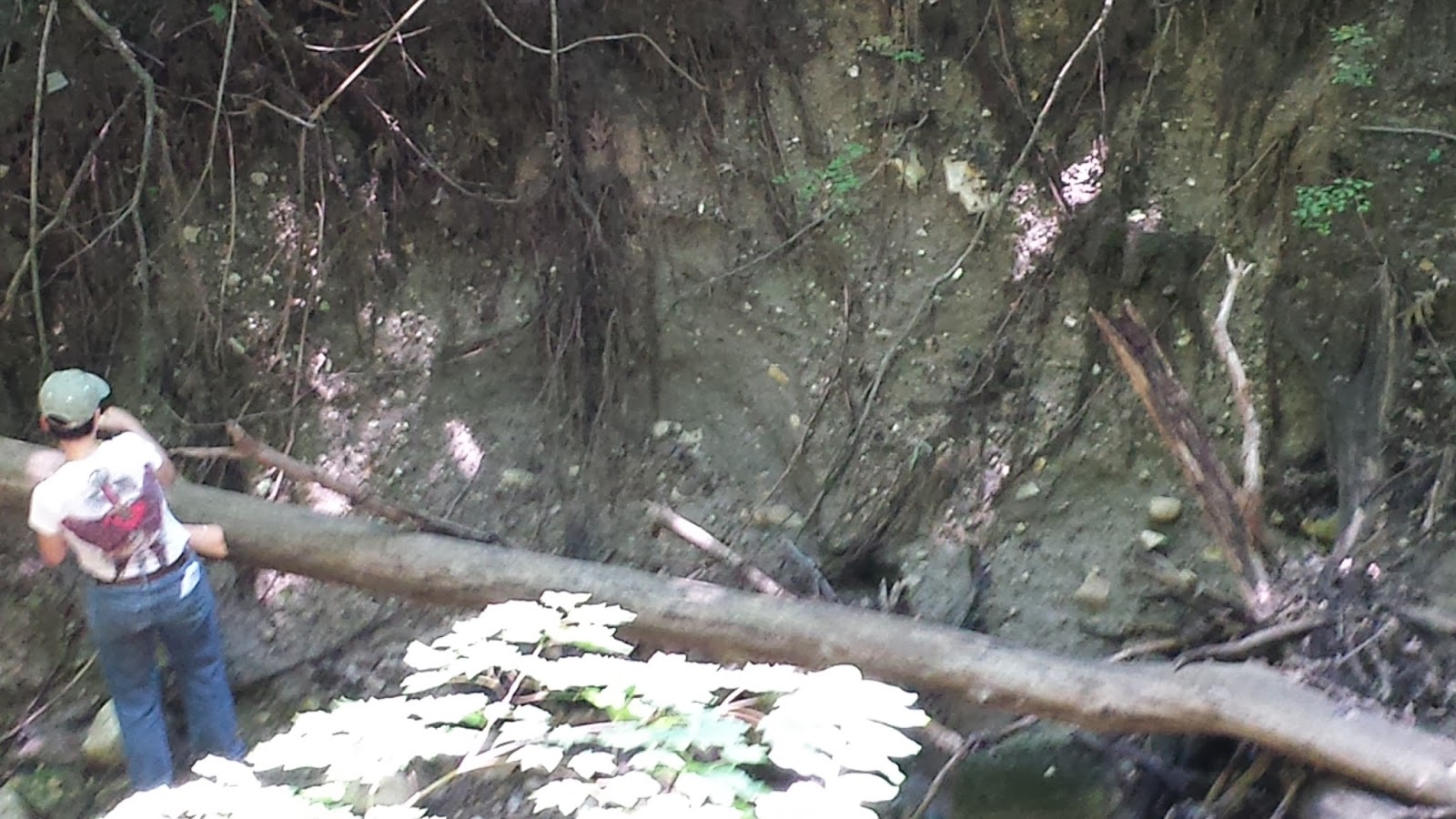 |
| Here a river has cut through a glacial feature known as a moraine. It's in a forest preserve in Palos Hills, IL, which is is just outside of Chicago. That's me. Picture by my friend Tom. |
Have you ever seen a pile of fine dirt mixed with random rocks? Have you ever wondered what that was?
If you live anywhere near the Great Lakes, you're very likely looking at a natural sediment called till. Till is one of the signs that glaciers once covered the area around the Great Lakes.
Other features that are easy to spot are large, rounded rocks that look like they were just dropped there. Those are erratics*. They're very often made of granite. This is because granite is so hard it's difficult to erode.
 |
| An erratic from the same area of Palos Hills. Photo by me. |
You can also find long, deep scratches or grooves across rocks. These are known glacial striations.
 |
| Glacial striations in a small trough. This photo was taken near the entrance of Keewaydin State Park in Alexandria Bay, NY. Those are my keys for scale. Photo by me. |
So if you live anywhere near Chicago or in the state of New York, evidence of glaciers are all around you. So keep your eyes open for them!
This is a GROOVY post. (Pardon the pun.)
ReplyDeleteROG, ABC Wednesday team
Puns rock. :-)
DeleteI like Roger's pun.
ReplyDeletethe power of glaciers is quite amazing.
I've never seen a glacier, though I see or read bits of them from time to time in different media. Maybe one day when I get to visit your side of the pond.
ReplyDeleteHazel
good piece - I pass a glacial erratic that ended up in nearby city park quite often
ReplyDeleteGood eye. Many people assume erratics in parks and farm fields were put there by people.
DeleteWhile sometimes a granite boulder can be decorative, in many places it was nature that planted them, not humans.
I'd love to see a shot of your boulder in the park to be sure.
Never seen this phenomenon before. Great shots!
ReplyDeleteThis is really interesting, I live in CT and think there may be some evidence here too.
ReplyDeleteYes! Such as Long Island and its bay! :-) Long Island was built by glacial outwash. Long Island Bay and large parts of CT were part of a massive glacial lake known as Lake Connecticut.
DeleteCT is covered with evidence of glaciers.
Neat! Great post - I love going somewhere and learning something.
ReplyDeleteThank you!
DeleteVery interesting !
ReplyDeleteMy husband and I often went to Norway, and therefore I wanted a stone from one of its glaciers for his grave. I had to buy it here in the Netherlands.
ReplyDeleteWil, ABCW Team
Wow amazing!
ReplyDelete